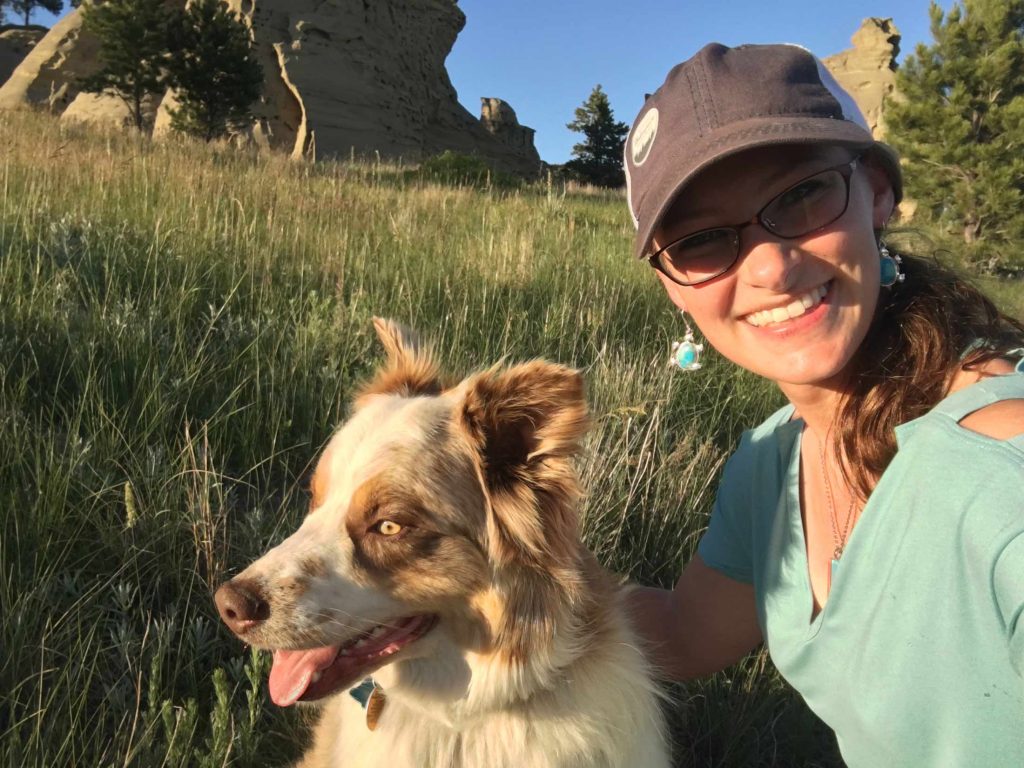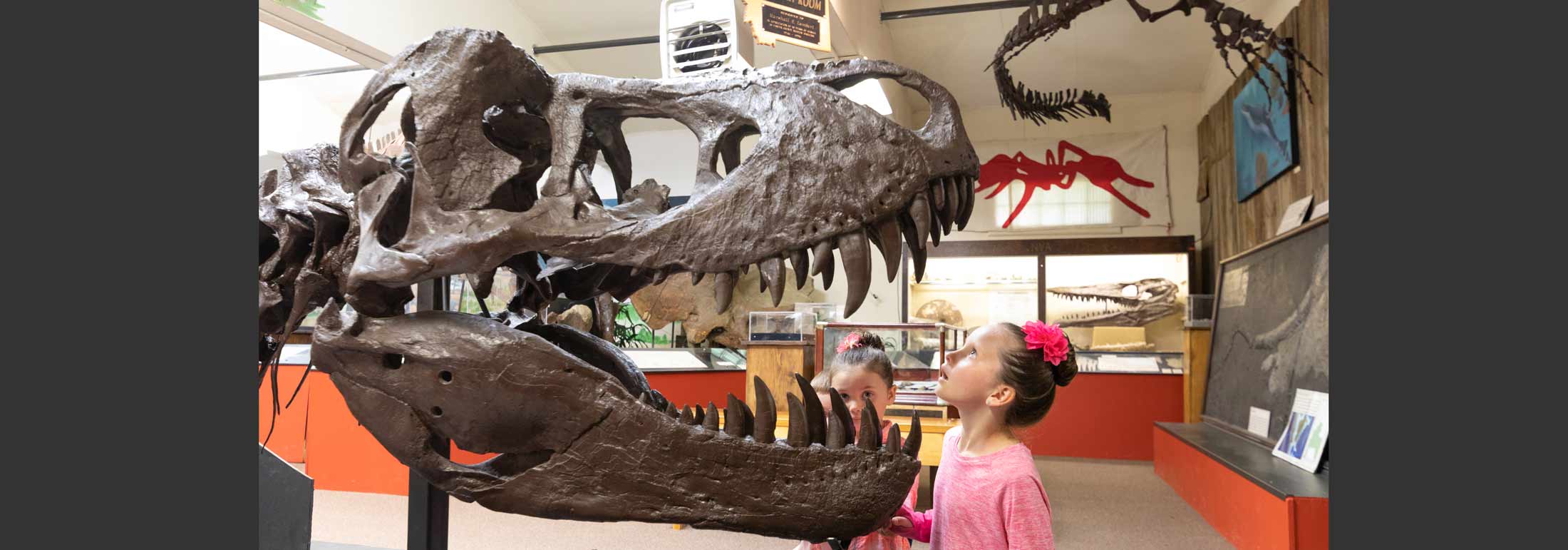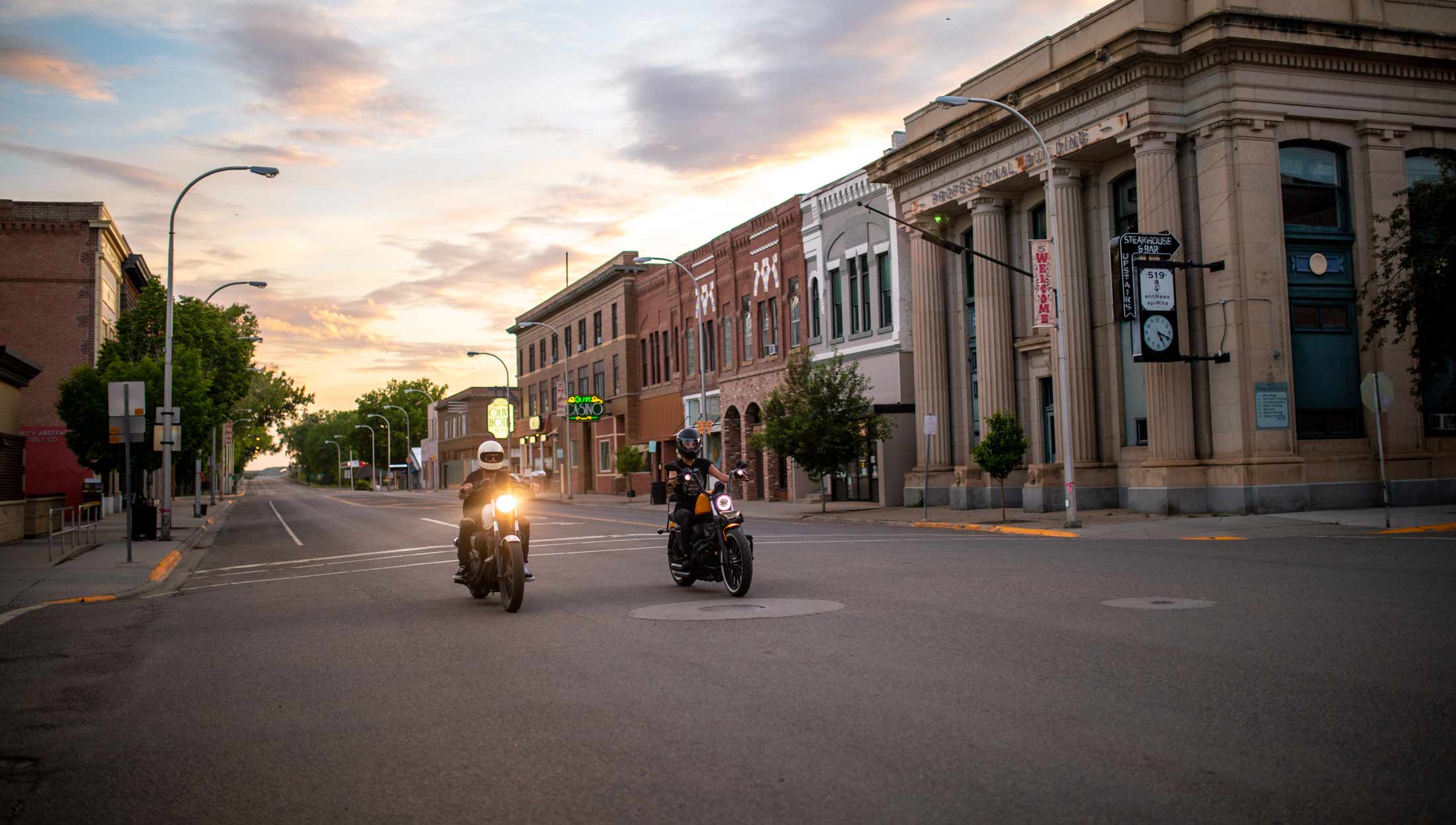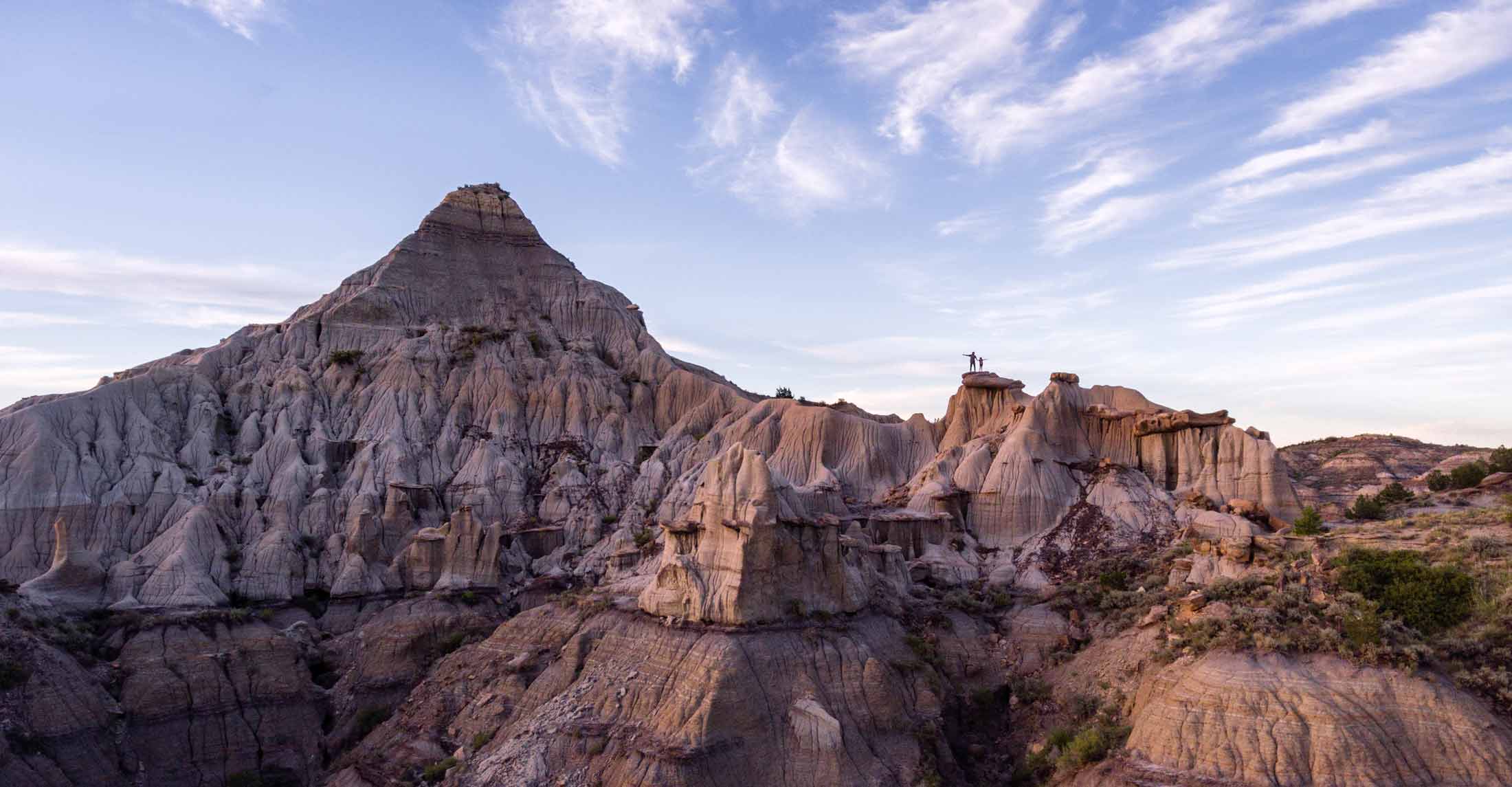In the spring of 1881, David Russell and his wife Ijakalaka — from the Oglala Lakota tribe — moved to what is now Southeast Montana and began a family. A few years later, a man named Carter bogged down in mud, said, “Anyplace in Montana is a good place to open a saloon,” and did just that.
That happened in1885 and the town of Ekalaka – named for Ijakalaka and spelled phonetically – was born. The town became a center of trade for cattle ranchers and sheepherders, home to freight lines, sawmills, banks and bars. Today, Ekalaka remains a primarily agricultural community, with a thriving small-town main street that offers food, locally-made goods and conversation.
The Carter County Museum, a primary attraction, draws nearly 6,000 visitors each year to this town of only 358. The museum has a long history as central to the community – from when it was housed in the high school basement to its current home in a striking building constructed of area sandstone and petrified wood. Volunteers from the community and beyond join together to scan and identify photographs, work in the museum’s native species garden, and of course, dig up dinosaurs and other animals of long ago.
As a member of the Montana Dinosaur Trail, our facility’s “mascot,” is a duck-bill, or edmontosaurus, and is one of the four largest on public display in the world. Unearthed in 1938 in Carter County, this massive herbivore is nearly complete and became the subject of the 1954 edition of Life Magazine, in which Ekalaka is featured as the “Town that Hunts Bones.” Images in the museum collections from that photo shoot include ladies in their Sunday best hunting fossils and Marshall Lambert, who served the museum as director for 50 years while also teaching science, spinning stories about the prehistoric past.
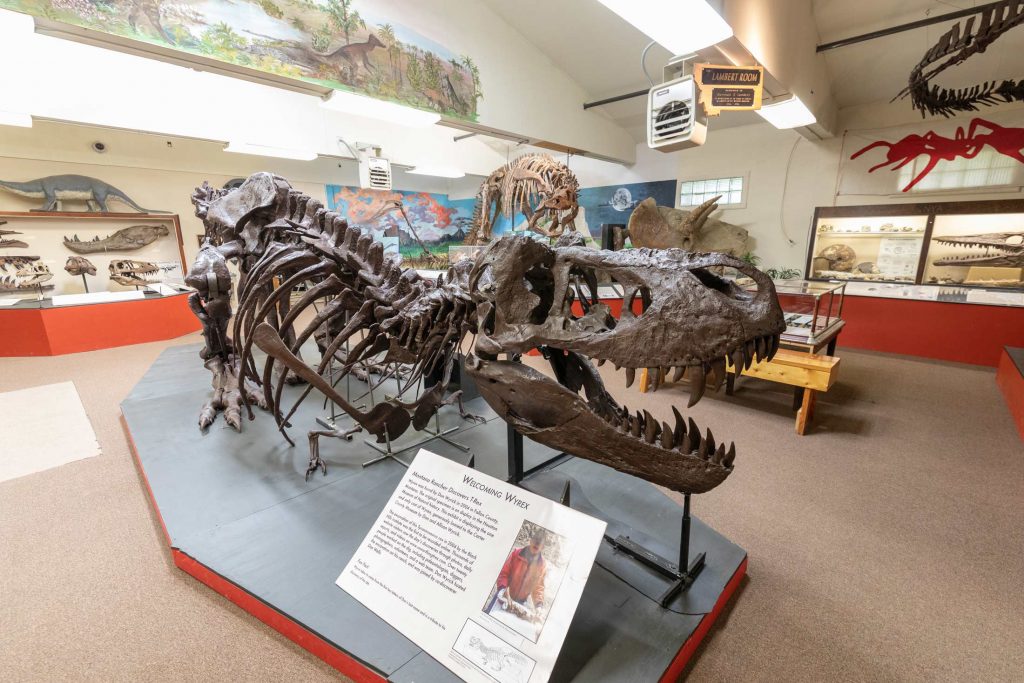
90 Million Years of History
When you visit Carter County Museum you will experience over 90 million years of history – from the time when Ekalaka was under the Western Interior Seaway, through beachfront property during the Cretaceous period, ancient rivers of the Fort Union. You will learn about the enduring traditions of American Indian Nations, the inception of the rodeo bucking horse (which originated in the area), and the story of centennial ranches in the region.
The museum boasts a large collection of Paleo-Indian artifacts, including pottery and points, and an extensive array of cultural objects. One of Montana’s oldest archaeological sites, The Mill Iron Site, is located nearby. Excavated in the 1980s, Mill Iron was a bison processing site that contains Goshen points and a mammoth bone piece that was used as a foreshaft on an atlatl dart. In incredible find, this piece dates back 10,500 years.
Historically, there were 18 tribes present in Carter County, including the Assiniboine, Sioux, Fort Belknap, Mandan, Hidatsa and Arikara nations. Ekalaka’s namesake Ijakalaka, was niece to Chief Red Cloud.
Many current Ekalaka residents are direct descendants of original homesteading families from the late 1800s. These families see the museum as the primary steward of the community’s cultural history and donated relics of town life for generations, making for a robust cultural collection that includes everything from a taxidermy two-headed calf to a doll made of barbed wire to military uniforms from different American wars.
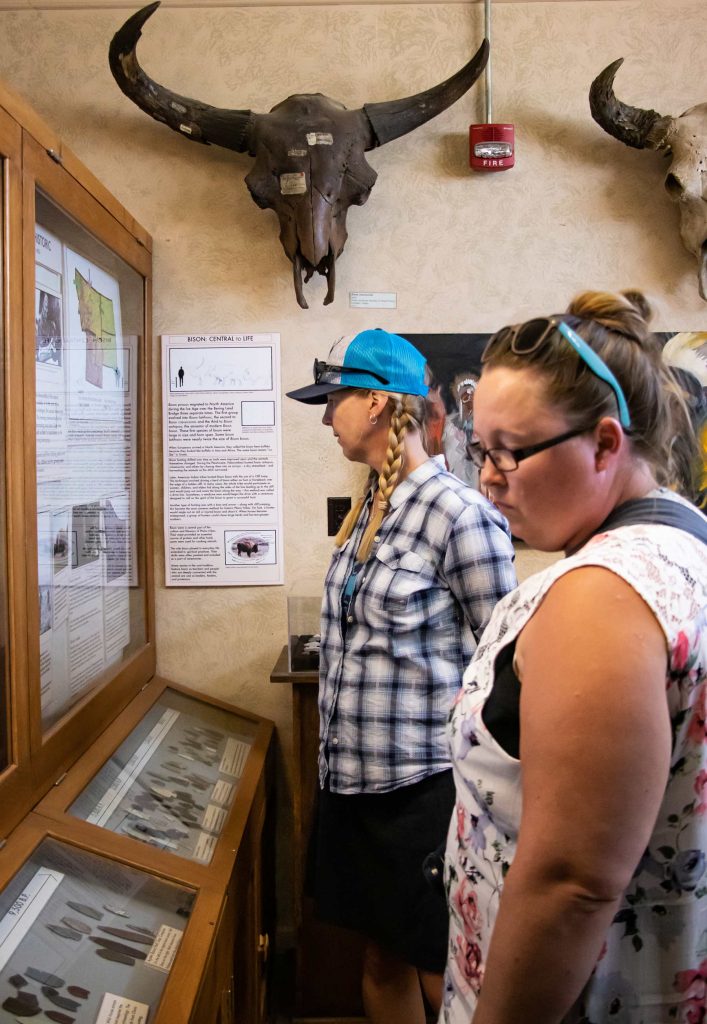
Unearthing the Past
Scientists from the American Museum of Natural History and the Chicago Field Museum were among our founder’s first teachers – helping to establish a standard of excellence in collections excavation, preservation and museum display equal to that of larger institutions in the nation.
For that, science geeks rejoice.
Our fossil collections hail from the Hell Creek, Pierre Shale and Fort Union Formations among others. Each of these formations tell the deep history of our planet. The bulk of our collections are from the Hell Creek, itself significant because it contains the K-T boundary, better known as the line of extinction marking the end of the non-avian dinosaur presence on the earth. Carter County has one of the largest and most well-preserved sections of the Hell Creek Formation, making it an essential piece of Montana’s fossil story. Our exhibits include a collection of unique characters – a bob-tailed tyrannosaurus rex, named Wyrex, a plesiosaurus marine reptile with a damaged fin, insects in amber from the time of the dinosaurs, and a flying reptile as large as a modern Cessna.
And here, science geeks linger. As do history buffs.
The museum has digital collections on Montana Memory Project that showcase photographs of the famous Tooke Bucking Horses, businesses of Carter County, yearbooks, and landscapes as well as several editions of the Ekalaka Eagle on Montana Newspapers.
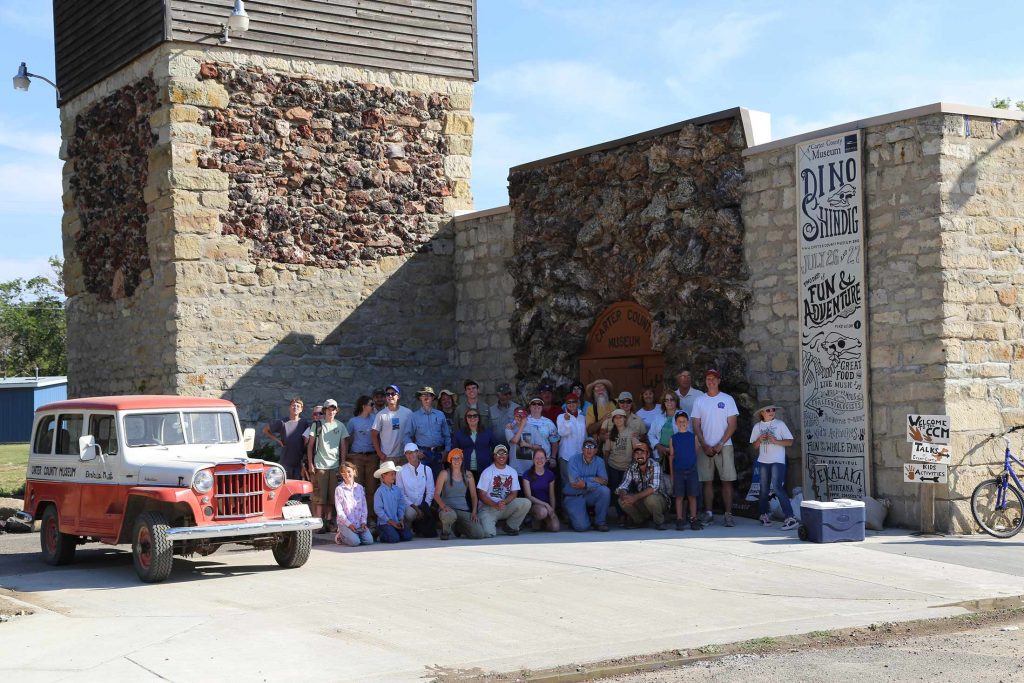
The Carter County Museum collaborates with Montana State Parks to host annual star parties, historical lectures and hikes at nearby Medicine Rocks State Park, Custer Gallatin National Forest Service for star parties at local campsites, and the Bureau of Land Management for the Archaeology Road Show and National Fossil Day. All of these activities invite participants of all ages to engage with the landscape and connect to the history above, around, and beneath them.
At the end of July each year, we hold the annual Dino Shindig, two days of dinosaur themed science lectures, kids’ activities, a BBQ and street dance that won the Montana Office of Tourism and Business Development’s designation as Event of the Year in 2017.
For directions or more information, see Carter County Museum’s website here.
